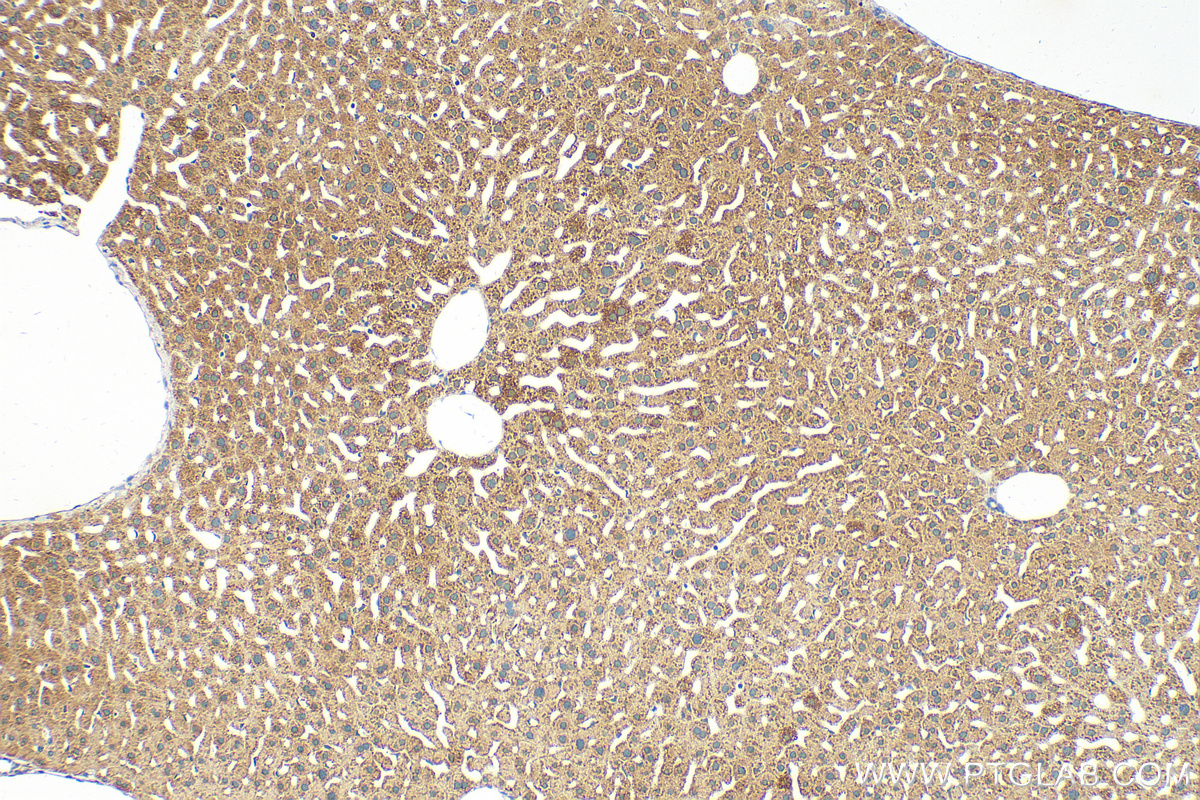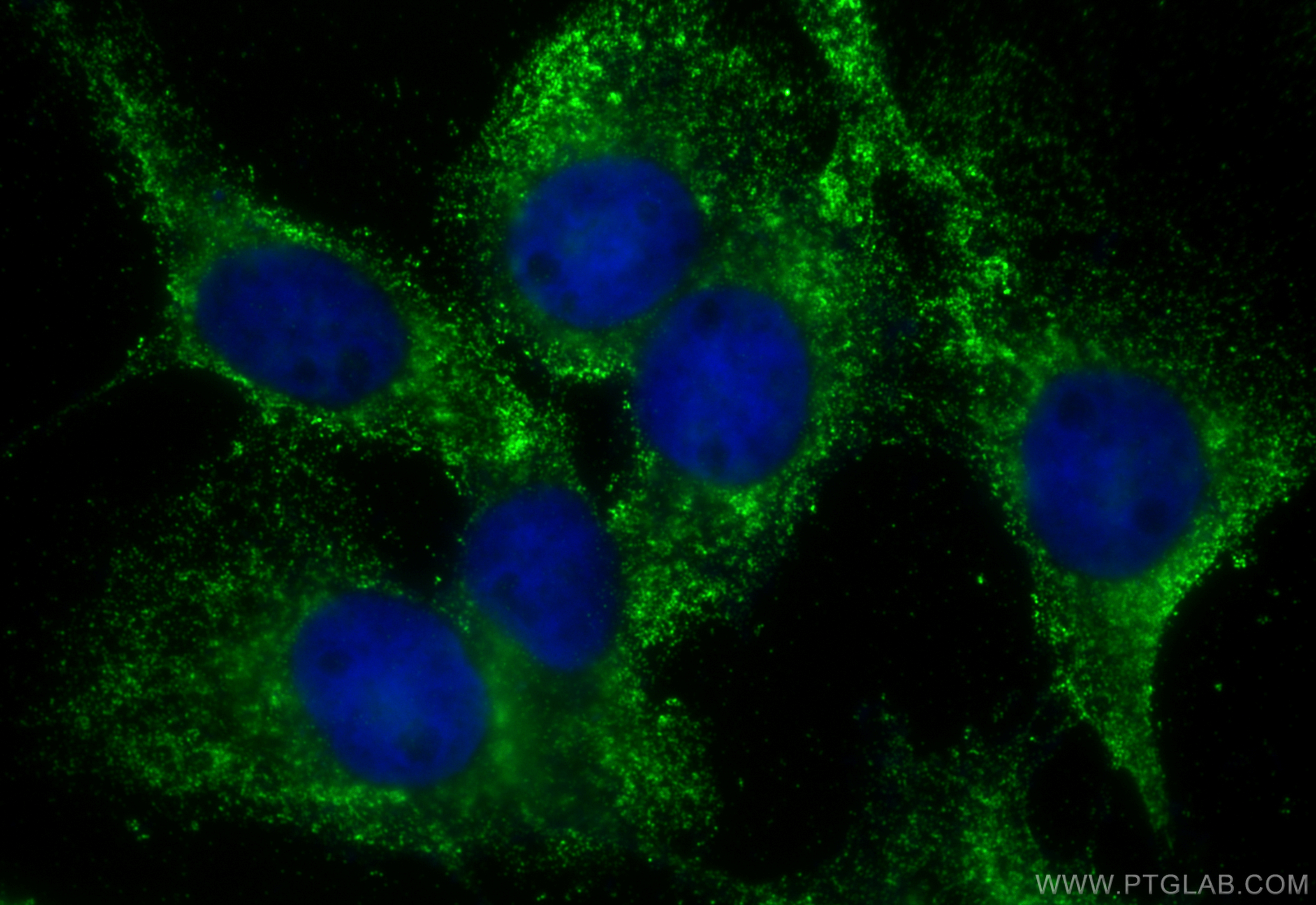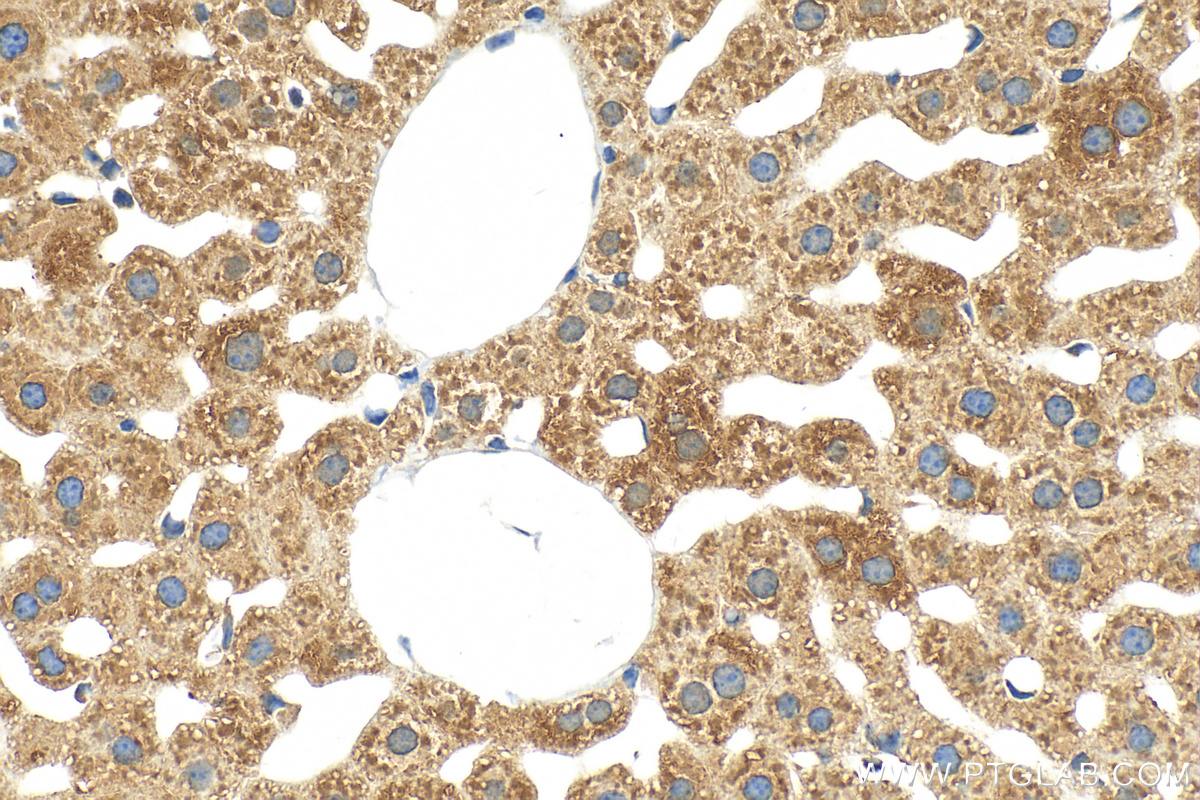验证数据展示
经过测试的应用
| Positive IHC detected in | mouse liver tissue Note: suggested antigen retrieval with TE buffer pH 9.0; (*) Alternatively, antigen retrieval may be performed with citrate buffer pH 6.0 |
| Positive IF/ICC detected in | A431 cells |
推荐稀释比
| 应用 | 推荐稀释比 |
|---|---|
| Immunohistochemistry (IHC) | IHC : 1:50-1:500 |
| Immunofluorescence (IF)/ICC | IF/ICC : 1:50-1:500 |
| It is recommended that this reagent should be titrated in each testing system to obtain optimal results. | |
| Sample-dependent, Check data in validation data gallery. | |
产品信息
31427-1-AP targets C20orf26 in IHC, IF/ICC, ELISA applications and shows reactivity with human, mouse samples.
| 经测试应用 | IHC, IF/ICC, ELISA Application Description |
| 经测试反应性 | human, mouse |
| 免疫原 | C20orf26 fusion protein Ag35425 种属同源性预测 |
| 宿主/亚型 | Rabbit / IgG |
| 抗体类别 | Polyclonal |
| 产品类型 | Antibody |
| 全称 | chromosome 20 open reading frame 26 |
| 别名 | CFAP61, SPGF84, CaM-IP3 |
| GenBank蛋白编号 | BC031674 |
| 基因名称 | C20orf26 |
| Gene ID (NCBI) | 26074 |
| RRID | AB_3669978 |
| 偶联类型 | Unconjugated |
| 形式 | Liquid |
| 纯化方式 | Antigen affinity Purification |
| UNIPROT ID | Q8NHU2 |
| 储存缓冲液 | PBS with 0.02% sodium azide and 50% glycerol , pH 7.3 |
| 储存条件 | Store at -20°C. Stable for one year after shipment. Aliquoting is unnecessary for -20oC storage. |
背景介绍
C20orf26, also known as CFAP61 (cilia and flagella associated protein 61), is a protein-coding gene located on human chromosome 20. The protein is predicted to be involved in cilium movement and cilium organization, and it is likely to be located in the axoneme and motile cilium. CFAP61 is also predicted to colocalize with the radial spoke stalk, which is a part of the structural framework of cilia and flagella.
实验方案
| Product Specific Protocols | |
|---|---|
| IHC protocol for C20orf26 antibody 31427-1-AP | Download protocol |
| IF protocol for C20orf26 antibody 31427-1-AP | Download protocol |
| Standard Protocols | |
|---|---|
| Click here to view our Standard Protocols |


